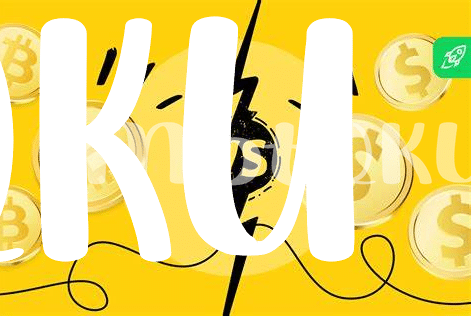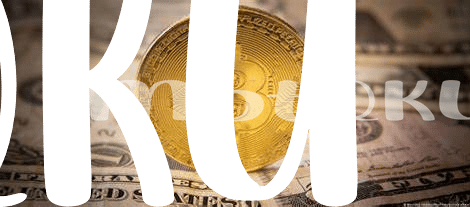🌍 How Bitcoin and Fiat Touch Every Corner

From bustling city markets to the quiet countryside, both Bitcoin and traditional money, or “fiat”, are weaving their way into every aspect of our lives. Picture this: while someone in a remote village may purchase goods using a few crisp notes handed over with a friendly smile, another person across the globe in a bustling metropolis might be buying coffee with a quick scan of their Bitcoin app. It’s a testament to how financial transactions are evolving. On one hand, fiat currency, backed by governments, continues to be the familiar backbone of global economies, enabling straightforward, everyday transactions. On the other, Bitcoin rides the waves of the digital age, offering a new form of money that is not controlled by any country but exists across borders, in the digital realm. Both have their unique ways of touching our lives, from the traditional to the cutting-edge, demonstrating the diverse yet interconnected nature of today’s global financial landscape.
| Feature | Bitcoin | Fiat Currency |
|---|---|---|
| Form | Digital | Physical and Digital |
| Control | Decentralized | Central Governments |
| Access | Internet-based | Universal with cash, broader with digital |
| Use Case | Investment, online transactions | Everyday transactions, legal tender |
🚀 Bitcoin: the Digital Gold Rush
Imagine discovering a treasure chest in your backyard. That’s what the early days of Bitcoin felt like to many. A digital currency that operates independently of traditional banking systems, it offered a new form of wealth nobody had quite seen before. Think of it as the modern-day gold rush but happening right on our computer screens. People from all corners of the globe began mining, trading, and investing in Bitcoin, hoping it would pay off huge, just like finding gold did for miners in the old days.
As fascinating as the world of Bitcoin is, it’s not just about making money. It’s also very much about the technology behind it, which is quite advanced. When you learn more about how Bitcoin works, it’s like peeling back the layers of an onion. There are always more surprises awaiting. For those curious about the profitability of getting involved in this digital gold rush, a deep dive into https://wikicrypto.news/tax-planning-strategies-for-bitcoin-and-cryptocurrency-investors could shed some light on the financial and technological intricacies. This journey into Bitcoin isn’t just a financial adventure; it’s a tech exploration with endless boundaries.
💵 Traditional Money: a Staple in Global Economy

When you think about buying something, whether it’s a cup of coffee or a new pair of shoes, what’s the first thing that comes to mind to pay with? Possibly cash or a card, right? This is where traditional money, or as experts call it, fiat currency, plays a crucial role. It’s the go-to choice for daily transactions around the globe. It’s regulated by governments, meaning it’s stable and reliable for everyday use. This familiarity and trust in fiat currency make it a fundamental part of economies everywhere, from bustling city markets to small rural shops.
Now, even though it’s something we use daily, many don’t realize the complex system working behind the scenes to keep the fiat currency running smoothly. From banks to ATMs, and the vast networks that allow you to swipe your card on the other side of the world – it’s a global system that connects us all. This network ensures that traditional money remains a staple in global trade and finance, facilitating transactions that drive the world’s economy forward. It may not have the excitement of a digital gold rush, but its steady presence is what keeps the world spinning.
💻 the Technology Behind Bitcoin Vs. Fiat

Understanding how Bitcoin works under the hood compared to traditional money—what most of us carry in our wallets—is like comparing email to snail mail. At its core, Bitcoin operates on a complex, highly secure technology called blockchain. Imagine a giant, digital ledger where every transaction is recorded and verified by computers around the world. This makes it super hard for anyone to cheat the system. On the other side, traditional money relies on a trust-based model, where banks and governments keep track of the money flow. This might seem simpler, but it does mean we need to trust these institutions to keep our money safe and manage it wisely.
As we dig a bit deeper, especially into how new Bitcoins are created, we enter the realm of bitcoin mining process explained. Unlike fiat currency, which central banks can print more of, Bitcoin requires a process called mining. Imagine a world-wide competition where computers solve complex puzzles to “mine” a bit of Bitcoin. This digital gold rush ensures the currency is both rare and secure. But this setup is entirely different from how new dollars or euros come into being, requiring no such global, computationally intensive contests. Both systems have their upsides, but their differences highlight the unique pathways Bitcoin and fiat currency have carved in our world’s economy.
🌱 Environmental Footprints: Bitcoin Mining Vs. Printing Money
When we think about spending or saving money, we rarely consider the impact it has on our planet. But just like choosing between a bike and a car impacts your carbon footprint, the choice between using digital currencies like Bitcoin and traditional fiat money plays a significant role as well. On one side, Bitcoin mining, a process necessary to create and verify these digital coins, uses a lot of electricity. Imagine the entire electricity usage of some countries; that’s how much energy can go into mining Bitcoin. It’s a bit like a digital gold rush, where miners use sophisticated computers that race to solve complex puzzles, consuming vast amounts of power.
On the other hand, producing and managing fiat currency is not without its environmental impact either. Although it might seem more straightforward, the process of printing money, transporting it, and maintaining its value also requires energy. These activities involve everything from the electricity used in printing facilities to fuel for transportation vehicles.
| 💡 | Unlike the singular process of mining for Bitcoin, the environmental footprint of fiat currency spans across its entire lifecycle. |
| 🌳 | However, recent advancements in digital banking and the gradual move towards less cash usage could help reduce this footprint. |
The question becomes whether the digital chase for Bitcoin’s gold or the traditional paths of money management tread lighter on our green Earth.
🤝 Bitcoin and Fiat: Can They Coexist?

In the world of money, two big players take the stage: the traditional, well-loved fiat currency, and the newcomer, Bitcoin, dazzling with its digital sparkle. Imagine this scenario like a busy market square; on one side, you have old, sturdy shops that have been there forever – that’s your fiat currency. On the other side, there’s a shiny new store selling something bold and different – that’s Bitcoin. Both have their fans. And just like in a market, variety is key. The real magic happens when these different types of money find a way to get along, complementing rather than competing with each other. It’s not about one replacing the other, but how they can enhance the experience of buying and selling in our global village.
Digging deeper into how these currencies interact brings us face-to-face with some technical and legal stuff. For enthusiasts looking to navigate these waters, understanding the ins and outs becomes essential. For those interested in how the digital world of Bitcoin meshes with the everyday use of money, including tax implications, bitcoin and digital identity explained offers a treasure trove of information. This partnership has the potential to redraw the financial landscape, making transactions smoother, faster, and possibly even greener. As with any great team, the strength lies not in their similarities, but in how their differences complement each other, creating a richer, more diverse monetary ecosystem.
